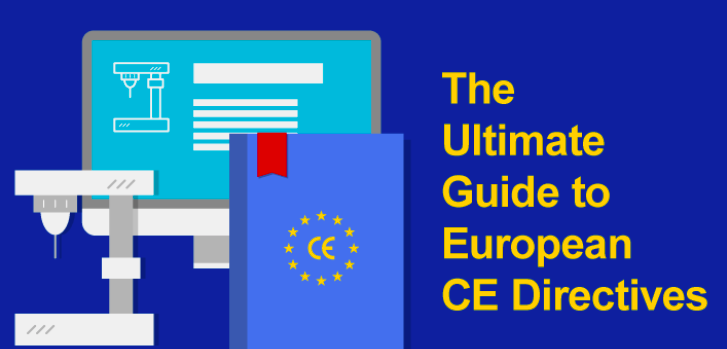CE Directives and Regulations
/ Law and Legislation
What are CE Directives and Regulations?
Many products that are being sold in the European Economic Area (EEA) require CE marking. The CE marking logo on a product means that the product:
- Falls within the scope of CE marking;
- A conformity assessment procedure has been carried out;
- Meets EU safety, health and environmental protection requirements.
The EU requirements are laid down in CE Directives and Regulations that over different products or product sectors, such as toys, electrical equipment, machinery, medical devices, construction products and personal protective equipment
There is a difference between Directives and Regulations.
Directives lay down certain results that must be achieved. However, each Member State is free to decide how to transpose directives into national laws.
Regulations on the other hand, have binding legal force throughout every Member State and enter into force on a set date in all the Member States.
Consult this CE mark database with an overview of all CE Directives and Regulations.
Where to Download CE Directives and Regulations?
- Finding the CE Directives and Regulations that apply to your products is not always easy.
- In this video we show you where you can find the Directives and Regulations in all languages spoken within the European Union.
- Has studying the Maltese version of the Machinery Directive always been on your bucket list? Watch the video HERE and find out where you can find it.
How to Identify the Applicable CE Directives?
Unfortunately, determining which CE marking directives and regulations apply to your product can be a daunting task. The European Commission does not provide a complete list of products for which CE marking applies, nor do they provide a full list of all CE marking directives and regulations.
The CE marking only applies to certain product groups or product aspects that are placed in the market or put into service in the European Economic Area (EEA) and Iceland, Norway and Liechtenstein.
In order to determine the relevant CE marking directives for your product, you need to do the following:
- Make a shortlist of the CE directives that might apply to your product (see Step 1).
- Verify the directives and determine if they apply to your product by checking the scope and the definitions (see Step 2).
Step 1: Make a Shortlist of the CE Directives That Might Apply to Your Product
It is not up to you to determine IF you will use a certain directive. If your product falls within the scope of a directive, your product simply MUST meet the directive’s requirements.
For example, if you are a manufacturer of 3D printers, the product falls within the scope of the Machinery Directive because it contains moving parts.
According to the Machinery Directive, a machinery is, amongst other things, “an assembly, fitted with or intended to be fitted with a drive system other than directly applied human or animal effort, consisting of linked parts or components, at least one of which moves, and which are joined together for a specific application”.
We had a client that sent us the following email:
We discussed that our 3D printers are covered by the Machinery Directive. I think we interpreted "covered" too strictly.
We have a new person responsible for compliance within our engineering team, and he's rightfully questioning our directives and process. It seems that the Machinery Directive is an option for 3D printers, but that the Low Voltage Directive also remains an option.
Our take is that the Machinery Directive is more for industrial-style equipment in which the primary risks are mechanical hazards, and that the Low Voltage Directive is better suited for smaller scale systems in which the primary risks are electrical.
We believe that we could possibly be covered by the Low Voltage Directive.
Remember: A directive never is an option, neither does another directive better suit than another directive.
From the list below, mark all product groups that might apply to your product. If any doubts, mark it anyway. In the next step we are going to verify if the directives really apply to your product.
What products need CE marking:
· Toys
· Machinery
· Electrical /electronic equipment
· Personal protective equipment
· Radio equipment
· Medical devices
· Active implantable medical devices
· In vitro diagnostics
· Simple pressure vessels
· Gas appliances
· Lifts
· Recreational craft
· Equipment and protective systems for use in explosive atmospheres
· Non-automatic weighing instruments
· Cableways
· Construction products
· Explosives for civil use
· New hot water boilers
· Measuring Equipment
· Pressure equipment
The CE Marking is required only for products for which a CE marking directive or regulation has been adopted. If a CE Marking directive or regulation does NOT exist for your product, it even is not allowed to mark your product with the CE Marking.
Read the full article here: https://instrktiv.com/en/ce-directives/

